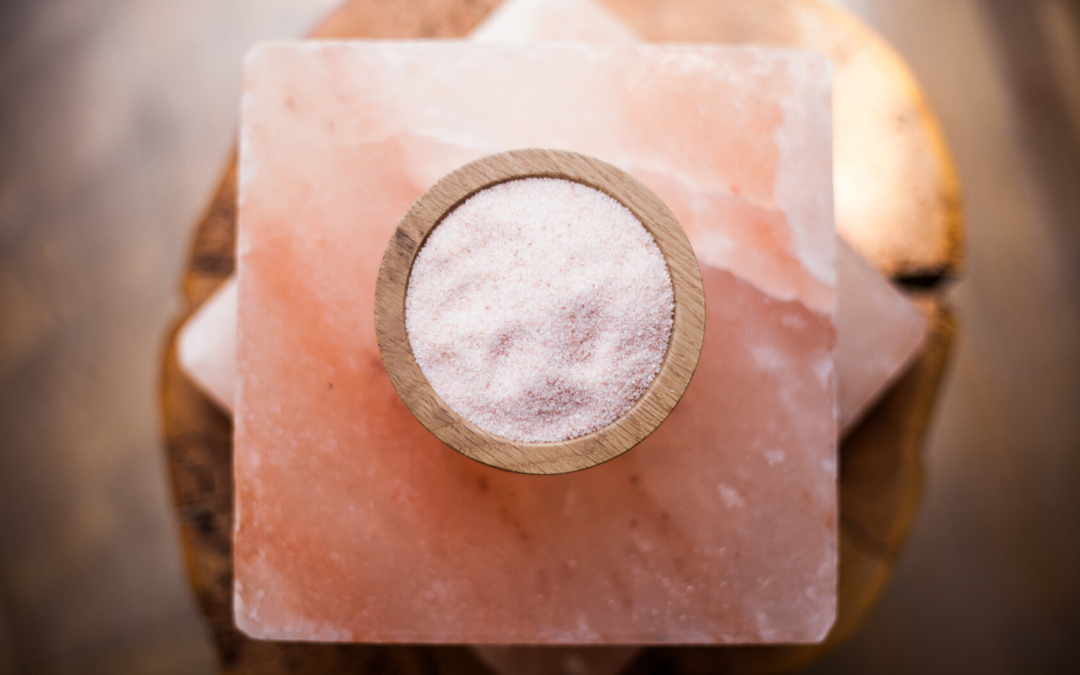8 Ways To Use Salt To Heal

8 Healing Benefits Of Salt (Plus 3 Awesome Table Salt Replacements)
We hear conflicting reports about salt.
Is America’s #1 food craving good for you or is it bad for you?
When we crave salt, it's usually because we have a mineral deficiency. And typically when I have clients that crave a lot of salt, their adrenals aren't functioning properly – and they can’t get or stay hydrated.
So we crave salt, the good stuff, the minerals. But if we’re taking in table salt, the bad stuff, that's actually creating more mineral deficiency. Plus, it's not allowing the craving to be satisfied, but rather making it more intense.
I'm not typically a fan of the whole panacea idea, but good quality salt is truly an anomaly because it helps with so many different things and we’ll go into eight of them in just a minute.
3 Table Salt Replacements
Instead of table salt, try replacing it with one of these three salts:
- Celtic Sea Salt (Did you know that Roman Soldiers used to call it white gold and actually use it for currency?)
- Himalayan Pink Salt
- Real Salt from Lakes
NBC released a report that came out linking table salt to worsening autoimmune conditions. Scientific American backed this up. It’s partly because of mineral deficiency and partly because of chemicals.
Salt is sodium chloride, but table salt is only 97.5% sodium chloride, and the rest is chemicals like anti-caking agents to manage moisture. Also, table salt is not in its natural form – it’s heated to 1200 degrees which changes the chemical structure.
There is absolutely no reason to put this in your body when you have food as medicine natural alternatives that can be used for myriad of health improvements.
These salts contain all 84 essential trace minerals the body, and especially the nervous system, needs to maintain many biochemical processes in the body.
How does salt help exactly?
8 Ways Salt Helps Support Our Body
#1: Inflammation Reduction
Good quality salt is alkalizing, which reduces inflammation and strengthens our bones because minerals are not being pulled from them to keep blood pH balanced. It reduces acid and reduces acid reflux, prevents muscle cramping, and creates an electrolyte balance – all things that lead to a lot LESS inflammation.
#2: Weight Loss
Having enough good quality salt stimulates your digestive juices. So, then you're going to digest and utilize your food better and refill mineral stores so you can stay better hydrated. Salt regulates water content both inside and outside of the cells, which is another way it improves your metabolism and helps you lose weight in a healthy, sustainable way.
#3: Skin Conditions
I advise clients to use good quality salt externally for eczema and psoriasis. You can take a bath with a 1/4 cup of one of these sea salts. It opens up the pores and helps improve the skin and provide relief while you’re addressing the underlying cause which is usually some kind of pathogenic invasion.
#4: Acne
1/8 of a teaspoon mixed in a little water will help give you that glow from the inside by providing gentle detoxification and hydration. Acne, again, has underlying root causes usually linked to hormonal and gut health, underlying pathogens, and amino acid balance. So, this is something to use to mitigate acne while finding the root cause of it.
#5 & 6: Depression And Better Sleep
¼ teaspoon dissolved into 4 ounces of water before bed helps to regulate two key hormones, melatonin which helps us sleep, and serotonin which makes us feel calm and relaxed. (Not a panacea for either, but definitely improves both.) As a bonus, melatonin and estrogen have an inverse relationship, so if you are producing enough melatonin, your body can better regulate estrogen to remain at safe levels.
#7: Improves Asthma
With asthma, if you drink some water and then you just sprinkle some salt on your tongue daily, it supports the respiratory system. I’ve had many clients do this and not need an inhaler after 3-4 weeks.
#8: Better For Your Blood Pressure Than Table Salt
These natural salts contain 500 milligrams less sodium per serving than table salt. So, if you have blood pressure issues, switching is a must. Plus, natural salt is stronger in taste. You naturally use less anyway than you would table salt.
Watch Your Daily Sodium Intake
All this said, you can have too much of a good thing.
When people take in more sodium than they need, their kidneys try to remove the excess through urine. If the kidneys cannot remove enough sodium, it begins to build up in the fluid between cells, known as the interstitial fluid. It can also imbalance your potassium.
The Dietary Guidelines for Americans recommends limiting sodium intake to no more than 2,300 mg per day. That is equal to about 1.5 teaspoons of good quality salt (table salt is lower).
There you have it – your very easy sodium swap – I hope it helps!
References
- Salt Linked To Autoimmune Diseases
- Reduced dietary salt for the prevention of cardiovascular disease: a meta-analysis of randomized controlled trials (Cochrane review).
- Low Salt Diet Increases Insulin Resistance in Healthy Subjects
- Salt intake and insulin sensitivity in healthy human volunteers.
- Decreased insulin sensitivity during dietary sodium restriction is not mediated by effects of angiotensin II on insulin action.
- Hemodynamic and endocrine changes associated with potassium supplementation in sodium-loaded hypertensives.





